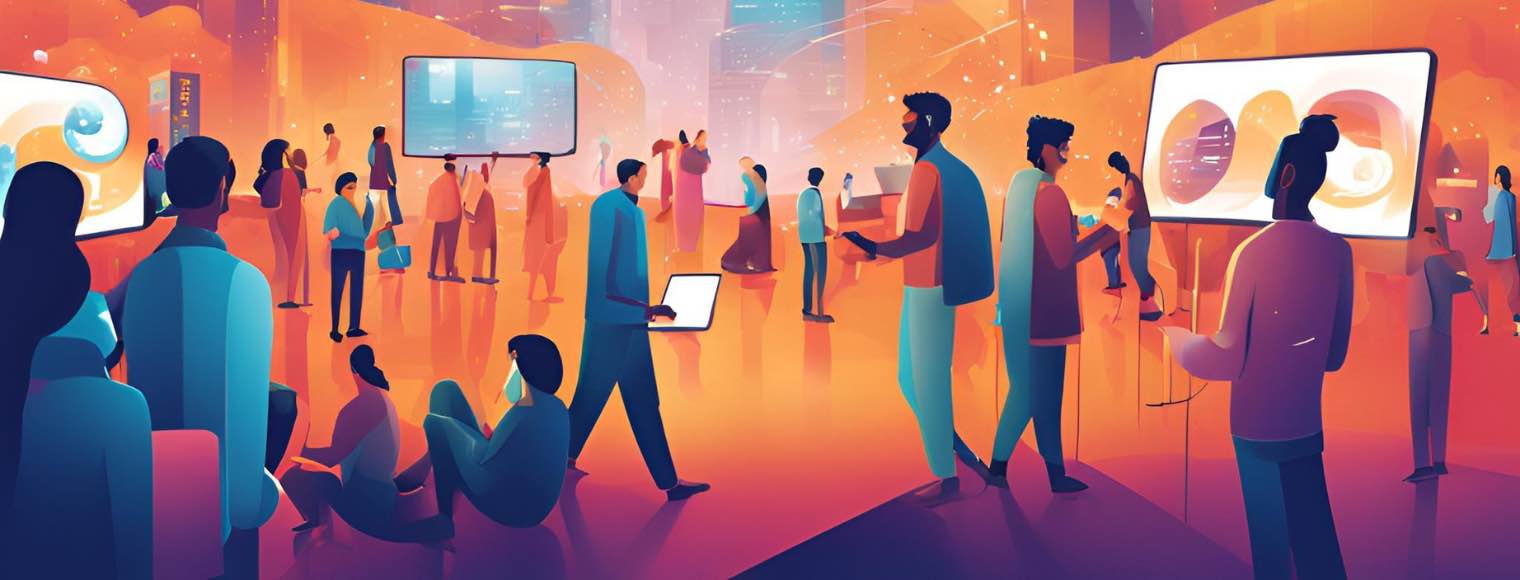
Abstract
This article explores the altering journey of India's digital governance, highlighting its current state, drivers, benefits, challenges, and future outlook. With initiatives like Aadhaar and DigiLocker revolutionizing service delivery, the article examines how government policies, technological advancements, and public-private partnerships are propelling India's digital transformation. It also dives into the benefits of digitization while addressing barriers such as digital literacy, cybersecurity concerns, and infrastructure gaps. Strategies for overcoming these challenges, such as broadband expansion and digital literacy programs, are also discussed. Finally, the article envisions a future where emerging technologies like AI and blockchain will redefine governance by 2040, making it more inclusive, efficient, and user-friendly. Through this analysis, the article emphasizes the pivotal role of digital transformation in shaping India's social and economic development.
Introduction
India's digital revolution is bringing forth a new era of efficiency, transparency, and involvement by transforming the way citizens access government services. By 2040, the nation is expected to have almost all governmental services available online, with more than 60% of government services currently available. In addition to being convenient, this change is essential to India's social and economic development. India hopes that digitizing services will improve citizen participation in governance, close access gaps, and cut down on bureaucratic red tape. The connection between the people and the government will change as the country continues to adopt digital solutions, resulting in a future society that is more technologically advanced, transparent, and inclusive.
The Current State of Digital Governance in India
The current state of digital governance in India reveals a robust framework of initiatives aimed at improving service delivery. Notable projects such as Aadhaar, which provides a unique identification system for accessing various services, and Digi Locker, which allows citizens to store and share documents online securely, have made significant strides. As of 2023, over 1.2 billion Aadhaar numbers have been issued, facilitating the identification of beneficiaries for government schemes (UIDAI, 2023). However, challenges remain; many citizens still encounter difficulties linking their Aadhaar to essential services, indicating gaps that must be addressed to ensure universal access (Rai & Singh, 2023).
Key Drivers of Digital Transformation in India
Several key drivers are propelling India's digital transformation. Government policies like Digital India and the Smart Cities Mission underscore the commitment to digitization (Government of India, 2020). Technological advancements in 5G and artificial intelligence are paving the way for more efficient service delivery (NASSCOM, 2023). Additionally, partnerships with private sector tech firms are instrumental in developing innovative digital solutions. According to NASSCOM, the Indian tech industry is projected to grow to $350 billion by 2025, further promoting digital initiatives that enhance governance (NASSCOM, 2023).
Benefits of a Fully Digitized Government
Transitioning to a fully digitized government holds substantial benefits. First, efficiency is significantly improved as digital platforms streamline processes and reduce bureaucratic delays; for instance, e-filing of taxes has cut processing times by nearly 50% (Ministry of Finance, 2022). Second, transparency is enhanced as digital records are less susceptible to manipulation. Initiatives like Pradhan Mantri Gramin Digital Saksharta Abhiyan (PMGDISHA) ensure that citizens have access to real-time information regarding government programs (Ministry of Electronics and Information Technology, 2021). Finally, citizen engagement is fostered through online platforms that facilitate better communication between the government and citizens, encouraging feedback and participation.
Challenges and Obstacles to Full Digitization
Despite its potential, full digitization faces several hurdles that need addressing. Digital literacy remains a significant barrier; many citizens lack the skills necessary to navigate online services effectively. Reports from the Telecom Regulatory Authority of India indicate that only 34% of the rural population has internet access (TRAI, 2023). Furthermore, according to a study by the International Telecommunication Union (ITU), while over 55% of Indians have access to broadband internet, only about 20% possess the ability to use it effectively (ITU, 2022). This highlights a critical gap between access and actual usage capabilities.
Additionally, cybersecurity concerns persist due to risks of data breaches and hacking; thus, robust protections are essential (National Cyber Security Policy, 2020). Infrastructure limitations also hinder progress; many rural areas struggle with inadequate internet connectivity. The India Inequality Report indicates that approximately 70% of the population has poor or no connectivity to digital services (Oxfam India, 2022). These obstacles create a significant digital divide that exacerbates existing inequalities.
Strategies for Successful Digital Transformation
To overcome these challenges and ensure successful digital transformation, specific strategies can be employed. Investing in infrastructure is critical; expanding broadband access through initiatives like Bharat Net aims to provide high-speed internet even in remote areas (Ministry of Communications, 2022). Promoting digital literacy through community training programs can equip citizens with the necessary skills while strengthening cybersecurity measures will reassure users about data protection and privacy.
The Future of Digital Governance in India: 2040 and Beyond
Looking towards the future of digital governance in India by 2040 and beyond reveals an exciting landscape characterized by emerging technologies such as artificial intelligence and blockchain. These advancements will play pivotal roles in enhancing service delivery and maintaining secure records (KPMG India, 2023). “Continuous investment and collaboration among stakeholders will be essential for realizing this vision,” where every interaction with the government is seamless and user-friendly.
Conclusion
In conclusion, while the journey toward digitizing government services in India is fraught with challenges, it brims with potential benefits that can lead to improved efficiency, transparency, and citizen involvement. The importance of this transformation cannot be overstated; it is crucial for India's advancement as it seeks to become a global leader in digital governance. By committing to a fully digitized future, India can ensure a better quality of life for all its citizens while fostering economic growth and social inclusion.
References
